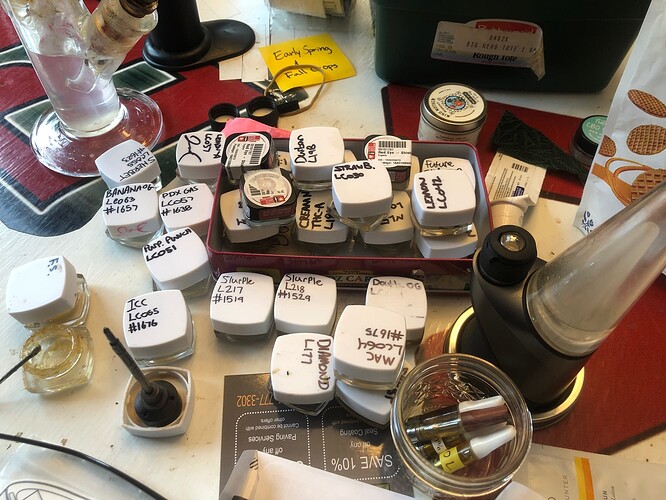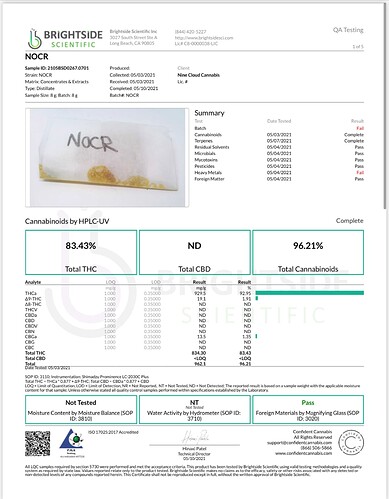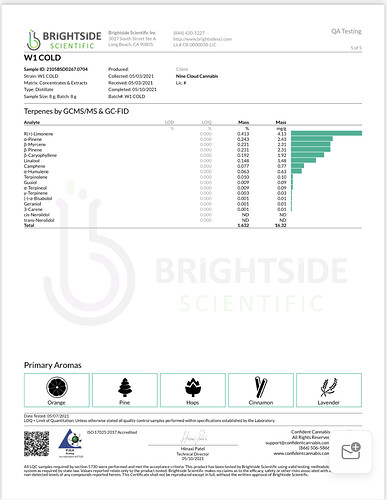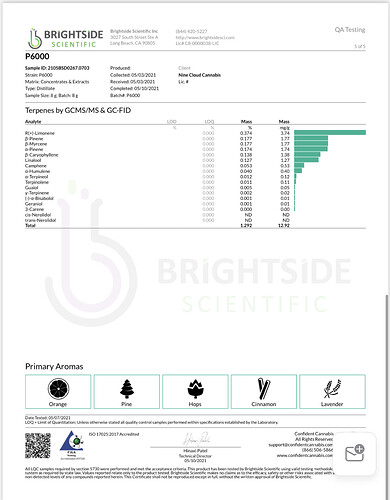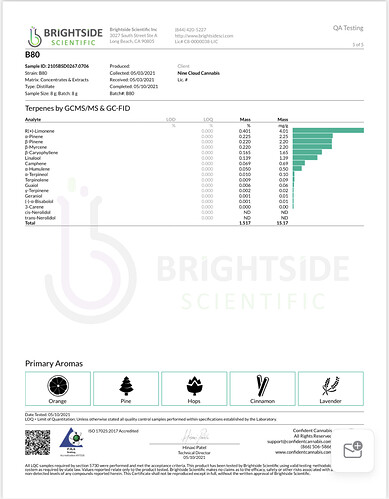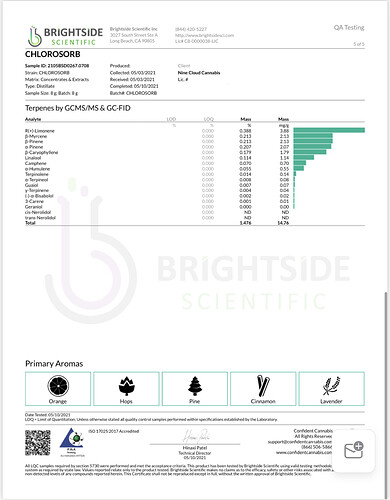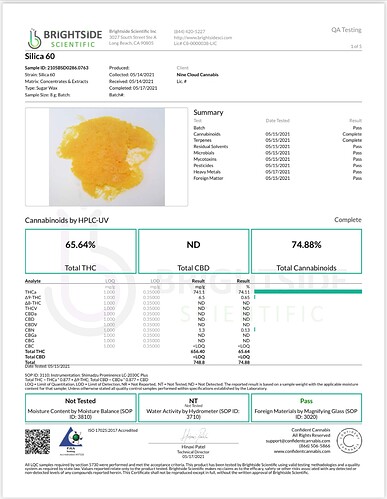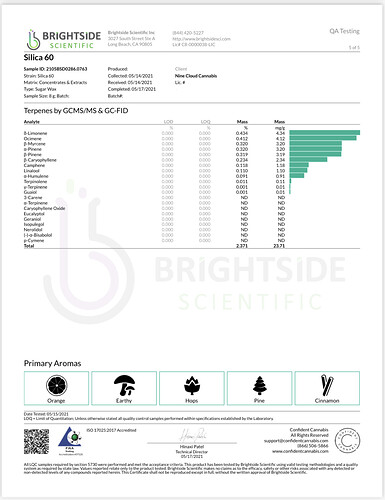Less dmt bro Lol
Lol was sober lol the face was just a Poppin though ![]()
![]()
![]() ilmao
ilmao
This is a short and very informative read. @Waxplug1 Thanks for all the useful info ! A long time ago i used to run unbaked B80 and it seemed to not effect terp profile at all when used in moderation but the color remediation wasn’t super strong . I have also used it baked and it was much stronger and changed the terp profile . How would you compare unbaked b80 to w2 or w5 . I think the moisture in the b80 is beneficial just like the w2 anyone else experience this ?
It’s very similar to W2. Both are natural but W2 is heat activated for increased surface area. B80 is attapulgite while W2 is saponite/attapulgite. The moisture does help the the fats coagulate thus increasing clarity in the oil
In a recent IG post of yours you mention that certain pigments have flavor that contribute to the entourage effect and that’s why it’s so important to choose the right media for the right biomass (pretty much quoted verbatim but I’d rather use parenthesis and say that in many more words than by simply using quotations marks). My question is how this is done. Is it purely through analytical feedback from the tested biomass or a combination of that and experience with specific biomass as well as considering age, storage conditions and so on? Or does analytical feedback not come into play? I can’t imagine it doesn’t. If this has been covered elsewhere I haven’t read it yet and yes I use the search bar religiously lol. I hope this doesn’t come across as spoony. Honestly I think that in this situation I’d have to ask what strains what powders lmao which I think would be near impossible considering about a thousand other factors that mean so much more ![]()
So A LOT of testing and tasting and grading and testing and tasting and testing and testing and tasting and grading
Yep. Backing those up with GC FID headspace and HPLC (so you don’t have to taste the failures as often) also helps.
…homework.
Definitely makes sense and I can see how this translates to large scale easier but not so much on the smaller scale because by the time you know exactly what you want all your starting material is gone but you’ve got some decent little jars of testers along the way. Not that something wasn’t learned on the way but…
Guess and iterate.
Take notes.
Note taste.
Fa sho. I guess lots of guessing and more tasting isn’t a bad thing ![]()
Not if you don’t write it down so others can repeat it.
(Take notes so others may follow, and stand on your shoulders to reach even higher…)
Has anyone ever packed these media into flash columns and done some small scale controlled testing for analytical results?
Here’s the case study in regards to this post on the flavonoids/pigments
https://www.instagram.com/p/CcO8dGQJGmY/?igshid=YmMyMTA2M2Y=
Check out this test we did here. It’s is a non crc run vs other individual sorbents to see how each one affects the terpenes,potency, tlavor, etc.
And here are the clays B80, W1, Perform6000, and ChloroSorb which has 5-10% carbon in it.
The first thing to notice is that the terpene profile is not being altered in a way that would make things taste different and also the terpenes are not being removed in excess like we think. You can see the difference in terpenes is very minimal. However, you can see here that the really acidic clays like perform6000 will remove more of the terpenes. Same with ChloroSorb which has carbon. If it was a full carbon based sorbent, the terpenes would be affected much more. So try to avoid really acidic clays and carbon unless color is the main objective. So, if the terpenes are all there still, why does it taste different? Why does the high feel slightly more “light” to say.
Just ask @Sidco_Cat and Sheldon
https://www.instagram.com/p/CcOPAxEO8O8/?igshid=YmMyMTA2M2Y=
There is clearly a noticeable difference in aroma and flavor and high. Yet the terpenes are still there. That’s what led me to believe that there is more to the entourage effect than just the cannabinoids and terpenes themselves. @AlexSiegel did mention to me that carotenoids have a smell and it’s just like carrots. That’s what tells me that these pigments also have flavor and combined with the terpenes, it’s what gives it its full spectrum flavor and effect.
P.s. on a side note I want to show you guys what Silica60 does as well. Remember I had mentioned that it makes the d9 move slower through it but allows the rest of the compounds through? You can see it more in the data here. For example, it’s the same effect you would see when passing a magnet through a copper tube.
If you look at the data here, when using the same amount of solvent, you can see the cannabinoids did not finish passing through the silica60 which is obvious in the potency results, but notice how the terpenes made it through? The pigments also pass through just as fast which is why silica60 will not glow those other cool colors. This feature here is what allows the user to hold back the d9 a bit to create a separation between the pigments and the d9 to allow the clays to be way more effective when removing these pigments. Most of the pigmentation is in the oxidized layer which is the d9
carotenoids, flavonoids, and esters, oh my!
For sure entourage involves things in addition to terps. Grape is an ester I believe.
Thank you my friend. I appreciate the feedback and I look forward to the possibility of attending one of your future seminars ![]()
Wow nice work! I can’t wait to see how this research develops because I truly believe this is the most important segment of the hash oil.
There are some questions that immediately come to mind for me. How does w1 perform against a “non cr” run in regards to these flavor/aroma compounds? Do these flavor/aroma compounds play any role in polymorphism?
